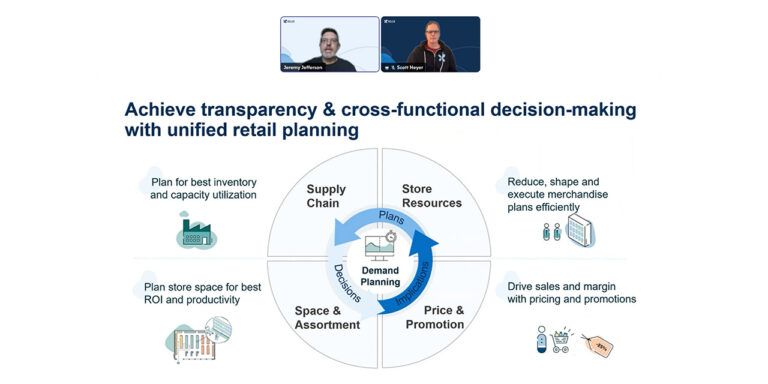It’s a consumers’ market. Today, shoppers have a wide array of options when it comes to shopping and no longer have to rely on local stores. Therefore, creating a unique brick-and-mortar shopping experience plays an increasingly important role in driving customer engagement and loyalty.
By using relevant clustering methodology and bringing shopper insights into merchandising, retailers can ensure stores generate positive customer shopping experiences, differentiating them from nearby competitors.
Leading retailers are taking a fresh look at their merchandising strategies and actively clustering stores based on data-driven insights to understand demand at a more granular level. Retailers must act swiftly when responding to dynamically changing customer buying habits, as static merchandising strategies are no longer sufficient.
However, some pitfalls can sabotage any retailer’s move towards customer-centricity.
The 5 pitfalls and how to avoid them
1. Moving from store-level to category-level clustering
Knowing the difference between store-level and category-level clustering is critical to creating an efficient centralized merchandising and assortment strategy. Historically, in pursuit of operational efficiency, retailers have tended to group their stores according to top-down constraints such as store size, total store sales volume, supply chain requirements, or geography.
For example, a retailer might put all stores larger than 5,000 m² (54,000 sq. ft.) in one group and all those smaller than 3,000 m² (33,000 sq. ft) in another. There can be operational and supply chain efficiency benefits to such an approach. However, to maximize sales opportunities, it’s vital to understand customers more deeply and cater to them more effectively through category-level clustering while still factoring in significant operational constraints. This approach helps develop an effective customer-centric assortment and merchandising strategy based on consumer behavior.
Category-level clustering enables retailers to use various strategies within the same store to ensure each category operates to its full potential. For example, the shoppers’ family size may heavily influence a category such as household cleaning goods. In contrast, beverage categories in the same store may be influenced predominantly by the shoppers’ age or income level.
2. Don’t forget category performance
While considering top-down constraints is essential when clustering, using these criteria alone will not produce an effective strategy. Retailers must begin the process by analyzing category performance to identify similar trends and patterns across their chain. For instance, a store with less than 3,000m² (33,000 sq. ft.) may have a dynamic category that sells the same mix of products at the same ratios and frequencies as a larger store. Since the category performs similarly in both stores, it would make sense to merchandise them similarly.
Once the store-level clusters are determined, performing a deeper analysis of each category’s performance in each store is essential to aligning assortment and merchandising with customer preferences. This requires a planning solution that can cluster stores using a “bottom-up” approach and analyze individual category performance patterns based on consumer behavior data.
A proper customer-centric strategy can be developed after arriving at a clear picture of category buying patterns across a chain. Top-down constraints can be factored in so that the cluster strategies can be effectively implemented in-store while ensuring that the supply chain operates smoothly. Combining bottom-up and top-down analysis enables retailers to capitalize on opportunities efficiently.
3. Vendor partners can help with clustering
Manufacturers and suppliers can play a significant role in the clustering process by providing valuable strategic-category expertise and extensive cross-retailer insight. Vendors often look at their products within a category, suggest category plans to retailers, and agree on new assortment and merchandising. Collaborating with strategic partners ensures category clusters are based on the best available internal and external information and category expertise.
However, to make this collaborative approach work, it helps to encourage vendors to use a consistent methodology, ideally one defined by the retailer. For example, one soft drink vendor may offer a cluster plan based on pack size, while a competitor may create a plan based on sales volumes. When differing methodologies are used for data and clustering processes, confusion arises as the retailer cannot compare like for like. The best solution is for the retailer to engage positively but steer the process and clearly define the methodology that suits their strategy.
When developing a clustering strategy, first analyze the data and determine which attributes best define which clusters. Rarely will the same attribute, such as pack size, work for all categories. Once the retailer has settled on a clustering methodology for each category, each vendor must provide cluster recommendations on that basis for their category. Ultimately, if a cluster strategy doesn’t work, neither retailers nor shoppers will benefit.
4. Don’t worry about every category – prioritize for clustering
The thought of clustering at the category level may seem overwhelming. However, retailers do not have to analyze the performance of every category in every store to create a successful strategy. Typically, the Pareto principle applies, and 20% of a retailer’s categories generate 80% of their revenue. To maximize the benefits of category-level clustering, retailers should focus specifically on strategic categories that significantly impact sales.
A good starting point is understanding which categories are dynamic, variable, or basic. Consumers make active choices in dynamic categories – brand, price, flavor, color, etc. In basic categories, they buy a ‘thing’ (“I need matches”), while choice is exercised with greater flexibility in variable categories.
For a grocery retailer, categories such as fresh produce are dynamic and benefit significantly from localized assortments. On the other hand, garbage bags or bleach are basics that don’t vary much from store to store.
5. It’s not about aspiring to be in a particular cluster
Lastly, don’t use letters and numbers when naming each store cluster across the chain. Store managers tend to see these as a ranking; naturally, people want to be A1, not 5E. This can severely disrupt the entire strategy. Clusters are all about efficiently meeting localized demand and serving customers, not competition between stores to be in a particular cluster. The best way to avoid this pitfall is to use generic names such as colors or objects.
Remember, clustering is a tool, not a goal
Retail was once driven mainly by top-down thinking, such as maximizing economies of scale. That approach is no longer enough in an age where consumers expect everything to be about them, not you. It’s too easy for people to buy what they want somewhere else.
Effective clustering lets consumer behavior drive space and assortment decisions, informs promotion and merchandising strategy, increases sales, and wins customer loyalty. It’s a way of ensuring the reality in stores shapes decision-making. It doesn’t preclude good top-down management – skillful handling of negotiations, purchasing, distributions etc. However, it means that all those excellent strategic management skills are directed towards the customer, not purely at suppliers and within the business.
Above all, remember that clustering is a tool and not a goal. Prioritize the categories that need your attention most. Work with vendor partners and collect every insight you can from them. Let your system do the heavy lifting and crunch the numbers so you can use your expertise to the most significant effect.
Above all, remember that clustering is a tool and not a goal. Prioritize the categories that need your attention most. Work with vendor partners and glean every insight you can from them. Let your system do the heavy lifting and crunch the numbers so you can use your expertise to greatest effect.





